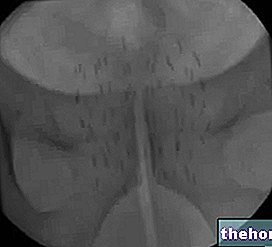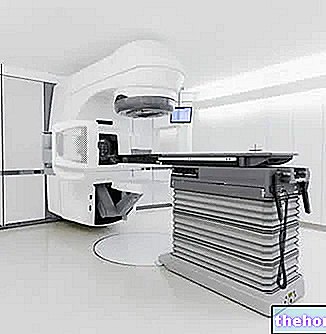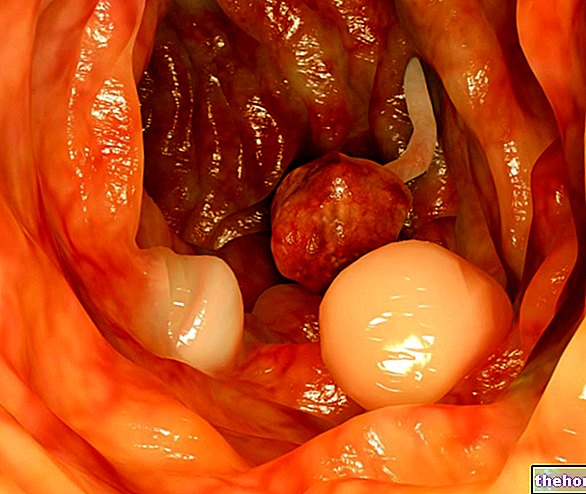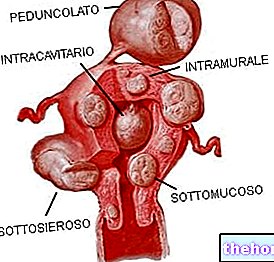The triggering causes, at the moment, are still unclear.

Figure: a breast fibroadenoma. From the site: daviddarling.info
However, the greatest suspicions relate to estrogen (female sex hormones) and the role they play during the second and third decades of life (ie between 15 and 30 years).
Most fibroadenomas are harmless and do not cause malignant breast tumors, however, to be sure of their benignity, an accurate diagnosis must be made.
Therapeutic treatment, when foreseen, involves surgical removal.
Breast fibroadenoma is not to be considered a dangerous condition as malignant breast cancer, however its onset requires periodic monitoring, as a precaution.
In-depth study: what is a benign tumor?
The term tumor identifies a mass of proliferating cells, which forms, in a completely abnormal way, inside a tissue.
In the case of benign tumors, the cell mass proliferates very slowly, it is neither infiltrative nor metastasizing (by non-infiltrative and non-metastatic, it means that it does not invade the surrounding tissues and does not spread through the organism, as it does, instead, a malignant tumor). A malignant tumor (or cancer or carcinoma) has exactly the opposite characteristics: it grows quickly and, if not removed in time, spreads to surrounding tissues and the rest of the body.
TYPES OF FIBROADENOMA IN THE BREAST
There are two types of breast fibroadenoma: simple fibroadenoma and complex fibroadenoma.
Simple fibroadenoma is a cell mass generally free of any danger, which remains stable (or even reduces) over the course of life.
The complex fibroadenoma, on the other hand, is a benign neoplasm to be kept under periodic observation, because, according to accredited scientific studies, it would seem to favor the appearance of a malignant breast tumor.
The differences between simple fibroadenoma and complex fibroadenoma also concern the internal structure: in complex fibroadenomas, in fact, fluid-filled cysts and calcium deposits can be identified, both of which are absent in simple fibroadenomas.
To find out what type of fibroadenoma you suffer from, you need to undergo appropriate diagnostic tests.
WHERE DO THE FIBROADENOMA ARISE IN THE BREAST?
The breast or mammellar gland has a particular anatomy. Inside, it contains glandular tissue, adipose tissue and fibrous tissue. The glandular tissue is composed of structures called lobules, which, joining together, form the so-called lobes.

Figure: the female breast and its main structures. From the site: breastcancercare.org.uk
In the lobes, breast milk is produced, which reaches the nipple through small channels, called milk ducts.
Breast fibroadenoma is a compact abnormal mass that forms in the lobules.
EPIDEMIOLOGY
Breast fibroadenoma is a benign tumor typical of young women, ranging from 15 to 30 years. According to some statistical data, in fact, starting from the age of 30, the chances of its appearance are gradually reduced, to the point that, in the post-menopausal period, they are very few.
According to a study carried out in the United States, the annual incidence of breast fibroadenoma is about 10% of American women.
HOW MANY FIBROADENOMES IN THE BREAST CAN FORM?
On a woman's breasts, one or more fibroadenomas may appear. When there are more than one, only one breast or both can be affected.
If the cell masses are of the simple type (ie they do not contain cysts and / or calcium deposits), the appearance of multiple breast fibroadenomas is completely random and has no particular significance.
WHEN TO SEE THE DOCTOR?
On the appearance of a breast fibroadenoma or in front of its possible enlargement, it is always recommended to contact your doctor and undergo precautionary clinical tests. Only in this way, in fact, is it possible to discover whether the benign tumor in question is of the simple type or of the complex type.
COMPLICATIONS
The presence of simple breast fibroadenomas is generally considered harmless.
Therefore, the only documentable complications are those related to a possible evolution of a complex fibroadenoma into a malignant breast tumor.
Here is an overview of the diagnostic path that is generally put into practice in case of suspected breast fibroadenoma:

- Physical examination. The doctor carefully analyzes the breast affected by the suspected lump and tries to understand its shape and size. As mentioned, a breast fibroadenoma resembles a marble and has, to the touch, a smooth surface and a sometimes rubbery, sometimes rigid consistency. Fairly sized fibroadenomas are easily visible even to the naked eye; those of smaller dimensions are better evident to the touch.
- Mammography. Mammography is an X-ray examination, which provides clear images of the area with the suspected lump. A breast fibroadenoma appears as a mass without roughness (therefore smooth), with defined contours, rounded in shape and, finally, distinct from the rest of the glandular tissue. This last aspect, namely the fact that the tumor is isolated, is particularly important, as it is what characterizes non-infiltrating breast tumors.
Mammography is the ideal test for detecting breast fibroadenomas in women over 30 years of age.
Being an X-ray examination, mammography involves the use of harmful ionizing radiation. - Breast ultrasound. The ultrasound examination allows to visualize, on a monitor and in real time, the structure of the suspected nodule. If there are cysts (typical of complex fibroadenoma), these are recognizable, because the diagnostic tool shows collections of fluid.
Unlike mammography, ultrasound does not use ionizing radiation and is the most suitable test for women under 30. - Aspiration by fine needle. Performed only in the case of a proven presence of cysts, it consists in "inserting a needle exactly in the suspected nodule and in" aspirating part of its liquid content. Once this is done, the liquid is analyzed in the laboratory and the type and severity of the fibroadenoma is established.
- Biopsy. It involves the removal of a very small portion of suspicious glandular tissue and observation of this under the microscope. At the instrument, the cells of a benign tumor are very different from those of a malignant tumor, therefore the biopsy is the ideal examination to establish the true nature of the neoplasm.
It should be remembered that the needle used for taking the cellular sample is decidedly larger than the one used for aspirating the liquid and, for this reason, could cause some concern.
Limit: it is an invasive procedure, especially if the suspected fibroadenoma is large.
The entire procedure is followed on a monitor connected to the cryoprobe and takes place under local anesthesia.
Limit: acting directly in situ (i.e. on site), does not offer the advantage described for lumpectomy of being able to further analyze the tumor tissue.
Limit: acting directly in situ (i.e. on site), does not offer the advantage described for lumpectomy of being able to further analyze the tumor tissue.




























